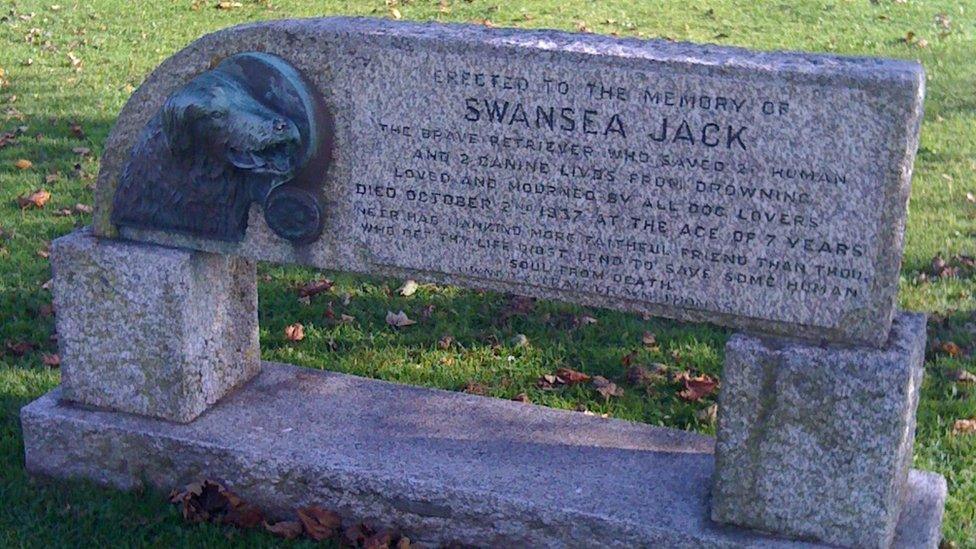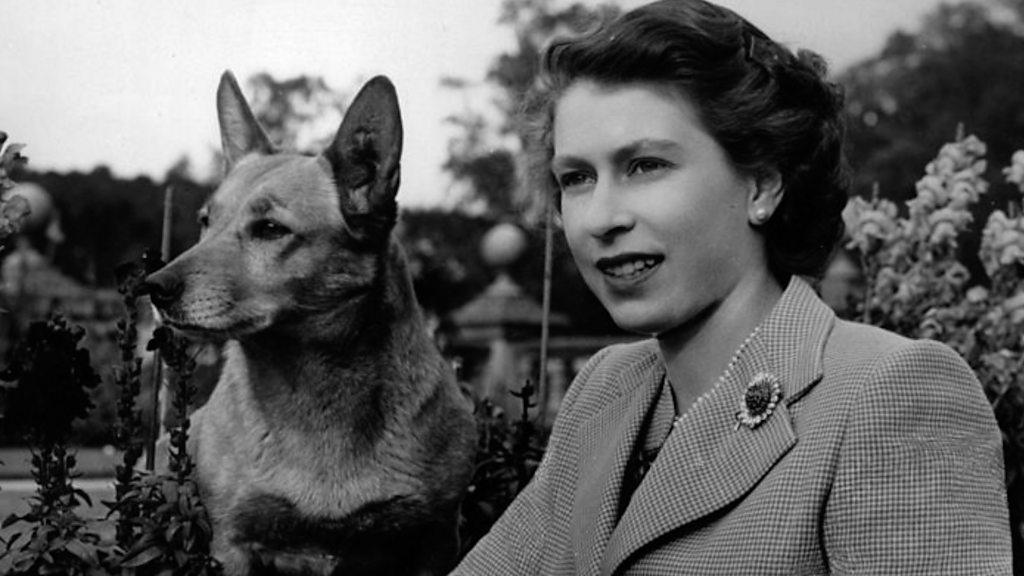Swansea Jack: Dog's lifesaving tales remembered after 90 years
- Published

Dogged determination: A memorial to Swansea Jack's deeds stands on Swansea promenade
A dog that became a hero 90 years ago is being celebrated to make sure the story of his bravery lives on.
Swansea Jack, a black retriever, saved at least 27 people and two dogs from drowning in the city between 1930 and 1937.
Writer Berni Hellier and illustrator Gayle Simmonds, who grew up in the area, have been fascinated with his story since their school days.
Now they have written a children's book to honour his good deeds.
Swansea Jack's lifesaving efforts saw him honoured by the Lord Mayor of London and scoop a Daily Mirror bravery award, among other accolades.

Writer Berni Hellier (right) and illustrator Gayle Simmonds
But despite his good deeds, Berni and Gayle admitted there were aspects of his early life they decided to airbrush from The True Tail of Swansea Jack.
He was born in Treboeth in 1930 and spent time playing in Llewelyn Park as a pup.
There, Jack developed a fondness for jumping into the lake, according to Berni.
"He'd try to 'rescue' ducks," she said.
"But often he didn't realise his own strength, and would end up killing them."
In the book, Jack "plays with the ducks" instead.
As a young dog, he had to be rehomed after making a nuisance of himself. He was adopted by William Thomas, who lived at Padley's Yard near Swansea Docks.
It was there Jack's real lifesaving adventures began.

Writer Berni Hellier with her own dogs, Woody and Demi
His first rescue came in June 1931 when he saved a 12-year-old boy, though it initially went unreported.
A few weeks later, this time in front of a crowd, Jack rescued a swimmer from the docks.
His photograph appeared in a local newspaper and Swansea Council awarded him a silver collar.
"Some people said it was a hoax and that the rescues had been put on for the cameras, but as time went on he did it again and again, and the doubters couldn't keep denying it," said Berni.
The dog became famous for dragging floundering people to the water's edge by their own collars.
At first, it was luck whether he happened to be in the right place at the right time, but over time he would be specifically called-for when somebody fell into the water.

Illustrator Gayle Simmonds with her dogs Ava, Bailey and Coco
Illustrator Gayle said creating her images of Jack were challenging as the surviving pictures were "quite grainy".
"A lot of the stories say Jack was a Newfoundland, but he seems too thin in the haunches for that, so I've depicted him as much more of a modern retriever," she said.
Sadly Jack met a premature end when he ate rat poison in 1937.
Gayle explained that the book depicted him "crossing the Rainbow Bridge, because he'd done all his work on Earth".
"It's a multi-faith idea," she said.
"Jack could have gone to heaven, or to live on a farm, or whatever your beliefs want you to say."

Jack - the retriever who kept going back for more rescues - finally went over "Rainbow Bridge" in 1937
Some believe the term "Swansea Jacks" - a nickname for Swansea City football fans - derives from Jack.
Other sources suggest that name comes from the "Jack tins" local copper workers used for lunch boxes, or from a term used to describe seafarers.
"All we're trying to do is reimagine a Swansea legend for children of the future," said Berni.
"Like all kids, they'll have to go and learn the full truth for themselves when they're old enough.
"In the meantime we just hope this keeps them interested in animals and their local community."

BAFTA CYMRU WINNERS: Celebrate the best television from Wales
THE TUCKERS: They might not always be on the right side of the law, but who's telling?

Related topics
- Published12 October 2022

- Published14 September 2022

- Published24 July 2022

- Published21 March 2022
